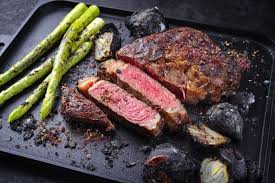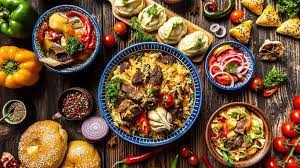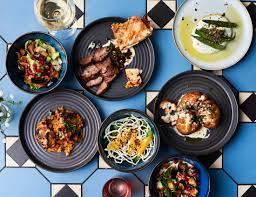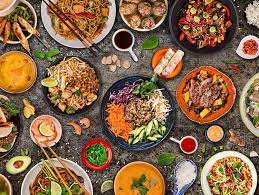Cuisine is not just about nourishment; it’s a reflection of cultural identity and heritage, a symphony of flavors, textures, and
aromas crafted with skill and passion. From the intricate spices of Indian curries to the delicate balance of French sauces,
cuisine is a journey that tantalizes the senses and brings people together around the table to savor the richness of life. It encompasses the art, culture, and creativity of food preparation, reflecting the diversity of flavors, ingredients, and techniques from around the world.
Cuisine is a type of food that is cooked in a specific way based on a culture’s ingredients, region, and traditions. If you’re craving
cannoli, a visit to Chinatown doesn’t make much sense, since cheese is more characteristic of Italian cuisine. Boiling an egg or flipping burgers on the grill is cooking.
Click here to explore more on cuisine: https://www.youtube.com/watch?v=eJOkAxHCVpw
African Cuisine (Exploring the Art Cuisine)

African cuisine is a diverse tapestry of flavors, colors, and textures, shaped by the continent’s rich history, geography, and
cultural diversity. From the spicy tagines of North Africa to the hearty stews of West Africa and the aromatic rice dishes of East Africa,
each region boasts its culinary traditions and specialties. Common ingredients include grains like millet and sorghum, root vegetables like yams and cassava, as well as a wide array of spices, herbs, and tropical fruits. African cuisine not only nourishes the body but also celebrates community, storytelling, and the vibrant spirit of the continent.
African cuisine is incredibly diverse, reflecting the continent’s rich cultural heritage, varied landscapes, and abundance of indigenous ingredients. Each region of Africa boasts its own unique culinary traditions, but there are some common themes and ingredients found throughout the continent.
In North Africa, dishes like tagines, couscous, and falafel are popular, often flavored with aromatic spices such as cumin, coriander,
and cinnamon. In West Africa, staples like fufu, jollof rice, and peanut stew are prevalent, featuring ingredients like cassava, plantains,
and peanuts. East African cuisine is characterized by dishes like injera (a sourdough flatbread) served with stews and curries,
as well as pilau rice and samosas influenced by Indian cuisine. Central African cuisine often revolves around hearty stews and
grilled meats, with ingredients like plantains, cassava, and okra featuring prominently. Southern African cuisine is known for dishes like braai (barbecue), biltong (dried meat), and pap (maize porridge), along with an emphasis on seafood along the coast.
Overall, African cuisine celebrates the use of fresh, locally sourced ingredients, bold flavors, and communal dining experiences.
It reflects the continent’s history, cultural diversity, and resilience, making it a vibrant and integral part of global culinary heritage.
Influences of Cuisine
A cuisine is partly determined by ingredients that are available locally or through trade. Regional ingredients are developed and commonly contribute to a regional or national cuisine, such as Japanese rice in Japanese cuisine.
Religious food laws can also exercise an influence on cuisine, such as Indian cuisine and Hinduism that is mainly lacto-vegetarian
(avoiding meat and eggs) due to sacred animal worship. Sikhism in Punjabi cuisine, Buddhism in East Asian cuisine, Christianity in European cuisine, Islam in Middle Eastern cuisine, and Judaism in Jewish and Israeli cuisine all exercise an influence on cuisine.
Some factors that have an influence on a region’s cuisine include the area’s climate, the trade among different countries, religious or sumptuary laws and culinary culture exchange. For example, a tropical diet may be based more on fruits and vegetables, while a polar diet might rely more on meat and fish.
The area’s climate, in large measure, determines the native foods that are available. In addition, climate influences food preservation. For example, foods preserved for winter consumption by smoking, curing, and pickling have remained significant in world cuisines for their altered gustatory properties.
The trade among different countries also largely affects a region’s cuisine. Dating back to the ancient spice trade, seasonings such as cinnamon, cassia, cardamom, ginger, and turmeric were important items of commerce in the earliest evolution of trade, and India was a global market for this. Cinnamon and cassia found their way to the Middle East at least 4,000 years ago.

Regional Diversity
Regional diversity in cuisine is a testament to the unique flavors, ingredients, and cooking techniques shaped by geography,
climate, history, and cultural influences. From the fiery spices of South Asia to the savory stews of Europe and the bold flavors
of Latin America, each region offers its own culinary identity. This diversity reflects local ingredients sourced from land and sea,
traditional cooking methods passed down through generations, and the fusion of culinary traditions brought about by migration
and trade. Exploring regional cuisine is like embarking on a culinary journey, where every dish tells a story and connects us to
the people and places that make each region distinct.
Global Cuisine (Exploring the Art Cuisine)
Global cuisine, also known as fusion cuisine or international cuisine, reflects the blending of culinary traditions from different regions and cultures around the world. This culinary phenomenon has been fueled by globalization, travel, immigration, and the exchange of ideas.
Global cuisine celebrates diversity, innovation, and creativity in the kitchen, resulting in unique flavor combinations and culinary experiences.
Examples of global cuisine include dishes like sushi burritos, Korean tacos, and Thai pizza, which combine elements from different culinary traditions to create something entirely new. Fusion restaurants and food trucks can be found in cities worldwide, offering an eclectic mix of flavors and ingredients that transcend cultural boundaries.
Global cuisine not only introduces people to new flavors and culinary techniques but also fosters cultural exchange and understanding. It serves as a reminder that food has the power to bring people together, transcending language and cultural barriers, and celebrating the shared experience of enjoying a delicious meal.
Culinary Art (Exploring the Art Cuisine)
Culinary art is the creative expression of cooking, combining technique, ingredients, and presentation to produce visually appealing and delicious dishes. It encompasses a wide range of skills and disciplines, including knife work, flavor balancing, plating aesthetics, and menu development. Culinary artists, whether professional chefs or home cooks, draw inspiration from various sources, including cultural traditions, seasonal ingredients, and personal creativity.
Beyond mere sustenance, culinary art elevates food to an experience, engaging all the senses and evoking emotions. It’s about more than just following recipes; it’s about understanding the science behind cooking, experimenting with flavors and textures, and pushing the boundaries of traditional cuisine. From avant-garde gastronomy to rustic comfort food, culinary art celebrates the diversity of culinary expression and the joy of sharing a meal with others.

Other type of Cuisine include:
Italian cuisine, French cuisine Chinese, cuisine Indian, cuisine Mexican, cuisine Japanese, cuisine Thai, cuisine Spanish, cuisine Greek, cuisine Turkish cuisine, Moroccan cuisine, Lebanese cuisine, Korean cuisine, Vietnamese cuisine, Brazilian cuisine, Ethiopian cuisine, Peruvian cuisine, Russian cuisine, German cuisine, Nigerian cuisine.
Read More: https://placesandlifestyle.com/the-cultural-significance-and-diversity-of-the-top-5-nigeria-soups/
Exploring the Art Cuisine




